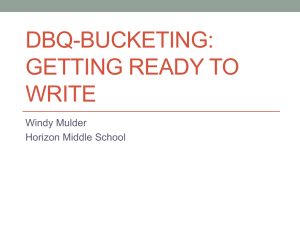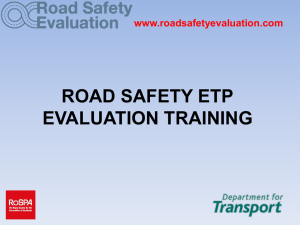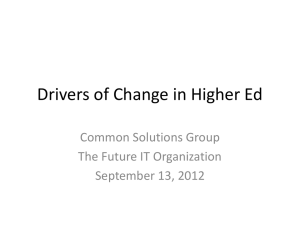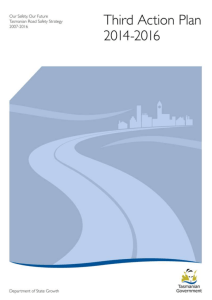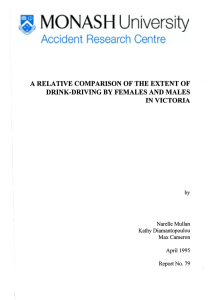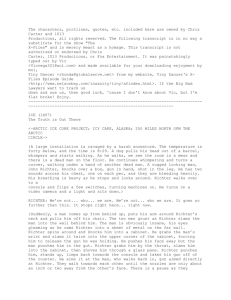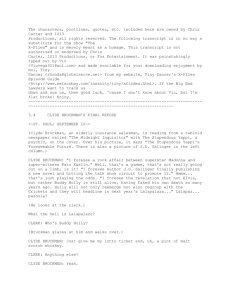Dangers of drink and drug driving November 30th, 2015
advertisement
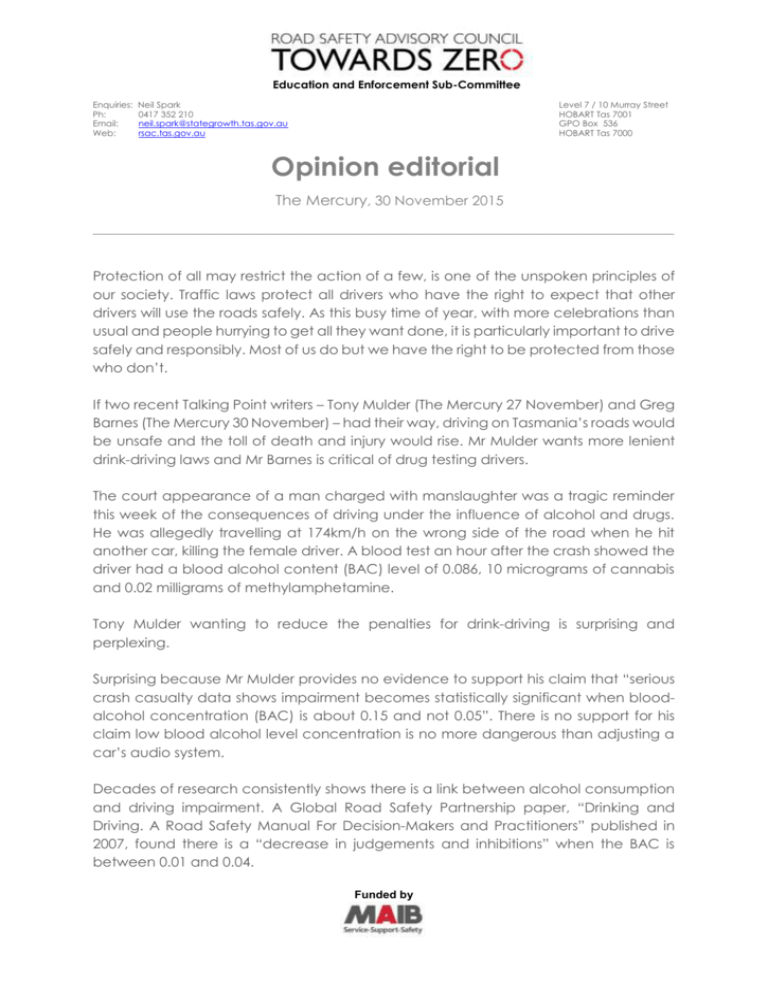
Education and Enforcement Sub-Committee Enquiries: Ph: Email: Web: Neil Spark 0417 352 210 neil.spark@stategrowth.tas.gov.au rsac.tas.gov.au Level 7 / 10 Murray Street HOBART Tas 7001 GPO Box 536 HOBART Tas 7000 Opinion editorial The Mercury, 30 November 2015 __________________________________________________________________________________ Protection of all may restrict the action of a few, is one of the unspoken principles of our society. Traffic laws protect all drivers who have the right to expect that other drivers will use the roads safely. As this busy time of year, with more celebrations than usual and people hurrying to get all they want done, it is particularly important to drive safely and responsibly. Most of us do but we have the right to be protected from those who don’t. If two recent Talking Point writers – Tony Mulder (The Mercury 27 November) and Greg Barnes (The Mercury 30 November) – had their way, driving on Tasmania’s roads would be unsafe and the toll of death and injury would rise. Mr Mulder wants more lenient drink-driving laws and Mr Barnes is critical of drug testing drivers. The court appearance of a man charged with manslaughter was a tragic reminder this week of the consequences of driving under the influence of alcohol and drugs. He was allegedly travelling at 174km/h on the wrong side of the road when he hit another car, killing the female driver. A blood test an hour after the crash showed the driver had a blood alcohol content (BAC) level of 0.086, 10 micrograms of cannabis and 0.02 milligrams of methylamphetamine. Tony Mulder wanting to reduce the penalties for drink-driving is surprising and perplexing. Surprising because Mr Mulder provides no evidence to support his claim that “serious crash casualty data shows impairment becomes statistically significant when bloodalcohol concentration (BAC) is about 0.15 and not 0.05”. There is no support for his claim low blood alcohol level concentration is no more dangerous than adjusting a car’s audio system. Decades of research consistently shows there is a link between alcohol consumption and driving impairment. A Global Road Safety Partnership paper, “Drinking and Driving. A Road Safety Manual For Decision-Makers and Practitioners” published in 2007, found there is a “decrease in judgements and inhibitions” when the BAC is between 0.01 and 0.04. Funded by Mr Mulder’s views are perplexing because his proposal to cut the fine for driving 0.05 or more from the minimum $308 and three months’ licence suspension to $150, no licence suspension and two demerit points sends a message to the community that drink-driving is acceptable. In every state of Australia and many countries throughout the world the blood alcohol limit for driving is 0.05. In Norway, Sweden and China it is 0.02. The relative risk of being involved in a fatal crash as a driver is four to 10 times greater for drivers with BACs between 0.05 and 0.07 compared to drivers with zero BACs, according to the Association for the Advancement of Automotive Medicine in the US. I wonder if Mr Mulder would be so lenient if a member of his family had been injured, or worse, by a drink-driver. His proposal would also increase the risk of being in a crash that may result in death and/or serious injury as well as a fine, loss of licence and social stigma. The link between drug use and crash involvement is “particularly strong”, according to the Centre for Accident Research and Road Safety – Queensland. Another study headed by Olaf H. Drummer found “THC, amphetamines and combinations of psychoactive drugs significantly increase drivers’ risk of a serious road crash”. Greg Barnes says drug-driving laws are unfair because they “punish some drivers who are not impaired as a way of deterring other drivers who might be impaired or who might become impaired”. The claim of “unfairness” ignores the principle of the right of all to be protected from the irresponsible actions of a few. The adverse effect drugs have on driving – illegal and some legal has also been well documented – is not disputed by Mr Barns. But he does not suggest an alternative. Tasmania Police’s drug and drink-driving enforcement is not restricted to random testing. There is also a focus on a targeted and intelligence-led approach to actively detect offenders that has resulted in increased detections of drink and drug-drivers. It is road safety authorities’ responsibility to provide the safest possible driving environment. The Road Safety Advisory Council provides community awareness education through advertising and Tasmania Police provides enforcement through intelligence-driven targeted and random alcohol and drug operations. If people take illicit drugs and drive they risk their safety and those of other road users. Some prescribed medication can also effect driving and drivers should take the __________________________________________________________________________________ Page 2 of 3 advice of warnings on medication labels. And if they do not feel they may not drive as well as usual, they should not do it. The road traffic laws are there to protect people. The best way to avoid being prosecuted is not to take illicit drugs or drive after drinking. Jim Cox Chair Road Safety Advisory Council __________________________________________________________________________________ Page 3 of 3

